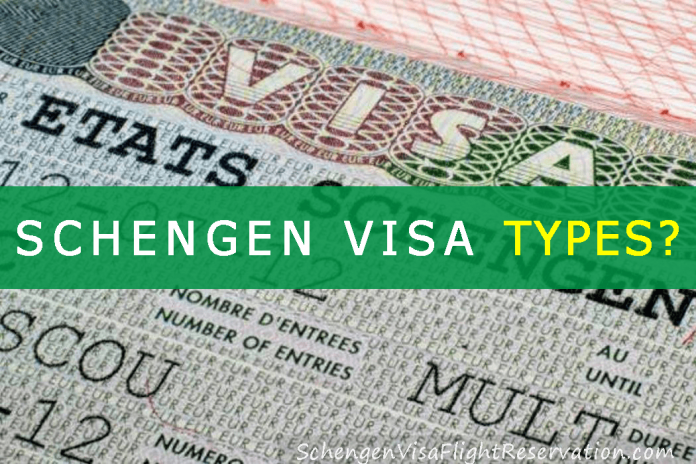A Schengen visa obtained by any of the Schengen Area member countries allows free movement to its holder within the whole Schengen Zone regarding the European Union Schengen members as well as the EFTA Schengen members, up to its validity and period limitations.
According to the type of visa issued by the certain embassy/consulate of any Schengen country there are different restrictions that apply to the particular visa in accordance to the nature of travelling and other relevant circumstances.
Uniform Schengen Visas (USV)
The Uniform Schengen Visa stands for a permit of one of the Schengen Area Member Countries to transit or reside in the desired territory for a certain period of time up to the maximum of 90 days every six month period starting from the date of entry.
Holder of a Uniform Schengen Visa can travel to these countries: Austria, Belgium, the Czech Republic, Denmark, Estonia, Finland, France, Germany, Greece, Hungary, Iceland, Italy, Latvia, Liechtenstein, Lithuania, Luxembourg, Malta, the Netherlands, Norway, Poland, Portugal, Slovakia, Slovenia, Spain, Sweden, and Switzerland.
According to the purpose of traveling the Uniform Schengen Visa applies to all of the two categories, “A” and “C”.
- “A” category stands for the Airport Transit Visa which allows its holder to travel through the international zone of the Schengen country Airport without entering the Schengen Area. Airport transit visa is mandatory for the citizens travelling from one non-Schengen state to another non-Schengen state through a change of flights in a Schengen country airport.
- “C” category stands for a Short-term visa which allows its holder to reside in a Schengen Area for a certain period of time depending on the visa validity. This particular category, according to the holder’s purpose of the travel can be obtained in a form of:
- Single-entry visa,
- Double-entry visa and
- Multiple-entry visa.
Single-entry visa
A single-entry visa allows its holder to enter the Schengen Area only once, within the given period of time, as mentioned in the visa sticker affixed to their passport. Once the visa holder exits the Schengen territory, he or she can no longer go back, even if they have not spend there the number of days as permitted by the embassy that issued them the visa.
Some people confuse the single-entry visa, thinking that it is about the number of countries the visa holder is permitted to visit, and that it allows them to enter one single country. In fact, the territory you are permitted to visit is given close to the “Valid for” tag in your visa sticker, whereas the time you are permitted to stay is given close to the “Number of entries” tag.
Double-entry visa
In general, a double-entry visa applies the same way as the single-entry visa explained above. The sole difference between a single-entry and a double-entry visa is that the second gives you the chance to go once more back to the Schengen territory once you have left it.
You should be very careful not to exceed the number of days you are permitted to stay in the Schengen Zone, as well as the period within which you can spend these days in the EU. Once again, do not mix the “double-entry” tag with the number of countries you are permitted to enter and remain within the given time.
With this visa, when you leave the Schengen Area for the second time, you no longer have the right to go back, even if you have not spend all of the days you were permitted to remain there. However, if you have obtained a double-entry visa more than once, and you are a frequent traveler to the Schengen zone, you are more likely to be granted with a multiple-entry visa, as explained below
Multiple-entry visa
A multiple-entry visa allows its holder to go in and out of the Schengen Area as many times as he or she wants, as soon as they do not violate the 90/180 rule.
Based on how frequently you travel to Schengen zone, you may apply and obtain one of the following multiple-entry visa types:
- 1 year multiple-entry visa
- 3 year multiple-entry visa
- 5 year multiple-entry visa
1 year multiple-entry Schengen visa
You can obtain this visa provided that you have obtained and lawfully used three visas within the previous two years. When you apply for this visa, you will need to show proof of what your previous visas and the trips you made to the Schengen Zone.
The 1-year MEV visa gives you the right to enter in the Schengen Zone as many times as you want, as long as you do not remain more than 90 days within this period.
3 year multiple-entry Schengen visa
The 3-year MEV is granted to applicants who have obtained and lawfully used a previous multiple-entry visa valid for one year within the previous two years.
This visa gives the right to its holder to enter the Schengen Area as many times as they wish within a period of three years. However, even in this case the visa holder is limited to remaining in the EU no longer than 90 days within a 180-day period.
5 year multiple-entry Schengen visa
5-year MEV is granted to people that have obtained and lawfully used a previous multiple-entry visa valid for at least two years within the previous three years.
This visa permits you to enter 26 countries in Europe as many times as you wish, within five years, as soon as you do not violate the 90/180 days rule.
> Rules for Getting 5-Year Multiple-Entry Visa to Schengen Area
Limited territorial validity visas (LTV)
This type of visa obtained allows you to travel only in the Schengen State that has issued the visa or in some other cases, in the certain Schengen States specifically mentioned when applying for the visa. Apart from these Schengen countries, this specific visa is invalid to any other Schengen country not specified prior. The holder of this type of visa cannot enter or transit through any other Schengen country that is not the first and final destination target. This type of visa is issued in very peculiar cases such as a humanitarian reason or under international obligation as an exception to the common USV system. This type of visa may apply for individuals who don’t possess a valid travel document yet have to travel to a Schengen area on an emergency of any kind.
National Visas
The national visa of “D” category is granted to the certain individuals who are to be studying, working or permanently residing in one of the Schengen countries. The national visa can be of a single entry, granted to the people who are in need of residing in the Schengen country for a certain period of time and for a sole purpose after which they shall return to their country. On the other hand a multi-entry national visa is also granted for certain individuals, allowing its holder to travel in and out of this Schengen country as he/she pleases and also travel throughout the whole Schengen Area without additional visa requirements.
In order to obtain a multi entry national visa, one must meet the certain criteria:
- An international student program will grant a visa for a period of not more than one year.
- An international student that is about to start a full course of studies in one of the Schengen countries. Again the visa is issued for a period of one year with the possibility of extending it.
- A pedagogical work at a higher institution or research center in any of the Schengen countries, regarding the person and its close family members.
- A professional who is traveling in any of the Schengen countries due to its expertise be it a sportsman, an artist or any other professional of its kind with the purpose of sharing its expertise.
- Emergency cases as a medical condition that prevents the individual leave the Schengen Area at the designated time frame.
Schengen Visa Types according to purpose of travel
On the other hand, when an applicant fills the Schengen Visa application form, he or she will also have to select a purpose why he or she is applying to enter the Schengen territory. Following find these purposes, and an explanation on what each of them stands for:
Airport Transit – this purpose of entry is for people who need to travel through the international zone of a Schengen Country Airport without entering the Schengen Country. The Schengen states have made a very narrow list of countries the nationals of which need to be possession of this visa. On the other hand, some of the member states have added extra other countries in their list. Therefore, despite of the fact that to transit through some countries you may not need a visa, depending on your nationality you might need it in others.
Transit – which is very similar to the previously explained purpose of travel. Mostly foreign seafarers, who only need to stop for very short periods by the seaport of one of the member states, check this purpose of travel in their application form.
Tourism – one of the most famous purposes for traveling to the Schengen Zone. People who are planning to visit any of the countries in this territory for sightseeing and experiencing their culture, architecture, foods and much more, should select this purpose of traveling in their application form.
Visiting Family or Friends – people who have family members or friends legally residing in the Schengen area, can apply for this visa, if they wish to visit them. There are some special requirements for this visa that the applicant must fulfill in order for the application to be successful, as i.e. a letter of invitation.
Business – a lot of people travel often to and from the Schengen countries for business purposes. The perks of applying for such a visa are many, as i.e. being able to get a quicker appointment during the peak season of visa applications when there is a high number of people applying.
Official Visit – you will have to tick “Official Visit” in your application form, if you are traveling to the Schengen Area on an official duty. You will have to check this visa purpose even if you are traveling together with a large delegation with identical travel dates and official purpose.
Medical reasons – If you are traveling to any of the member states of the Schengen territory to seek medical treatment, you should select ‘medical reasons’ in your application form. This visa enables patients to get the medical care they need at any medical clinic or hospital for a period of three months within 180 days.
Study Purposes – pupils and students that wish to attend any type of educational institutions, as university courses, language courses and other, for a period shorter than three months, can apply for a Schengen study visa. Those that need to take an entrance exam for school or university in the Schengen Area, should also tick this visa purpose.
Cultural, Sports and Film Crews – a visa established for people living outside of the Schengen area, wishing to travel to Europe for the purpose of attending a Cultural / Sports / Religious Event and Film Crews. The applicant should be part of the event, as i.e. a performer at a concert, or a writer presenting their book at a book fair, and not only audience.
Other – If your purpose of entry to the Schengen Area does not match any of the purposes given above, you will have to tick the “Other” option in the application form. However, you will still need to specify what the reason behind your application is. You will have the chance to do so in a short simple sentence, at most. I.e. if wish to enter any of the member states to attend a religious event or something similar, you can write “Religious Visit” or “Religious Purposes”.
Difference between Visa Validity and Duration of Stay
Aside of a multiple-entry visa, which enables you to remain in the Schengen area for a maximum of 90 days within a 180 days period, the validity of your single-entry visa or double-entry visa depends on the embassy. The embassy appoints the number of days you are permitted to stay in any of the Schengen countries, as well as the first date you are permitted to enter Schengen and the last day that you are permitted to remain.
This is the point where many people get confused, because they do not realize there is a difference between visa validity and the duration of stay in a visa.
Duration of Stay – is the maximum of days you are permitted to remain in the Schengen. The first day you enter Schengen is counted as “Day 1”, even if you enter just a few minutes before midnight. Whereas, the “Last Day” is counted the day you leave Schengen, even if it is just a few minutes after midnight.
Visa Validity – on the other hand, is the period of time from which to which you can use your visa to enter and stay in the Schengen Area.
Example: the duration of stay in your visa is 10 days, whereas the validity of your visa is from 1 January to 20 January. In this case, you can enter the Schengen Zone anytime within this period. You can enter i.e. on 3 January and leave on 12 January. On the other hand, if you enter on 15 January, you will still have to leave on 20 January, despite of not having spent the number of days you were permitted to stay.
On the other case, if you have a double-entry visa, with a visa valid from January 1 to March 1, and a duration of stay of 10 days, then you can enter the Schengen Area twice within this period. You are still not allowed to remain more than 10 days during both trips. If during the first trip you stay 7 days, then in the second trip you can stay for three days at most. If you make just one trip and spend 10 days in any of the member states, then you have no right to enter the country despite of the fact that you visa is still valid.
As per a multiple-entry visa, if i.e. you have a three-year multiple-entry visa, which becomes valid on January 15, 2018 then you will be permitted to enter and leave the Schengen whenever you want until January 15, 2021. You should not forget that there is a rule of 90 days limit per each 180 day-period
90/180 Schengen Visa Rule
Another point where most multiple-entry Schengen visa holders get confused, as well as the nationals of the countries that are permitted to enter Schengen visa-free. Most people think that the 180-day period starts on the day you visa becomes valid, which is not true.
Actually, the 180-day period keeps rolling. Therefore, anytime you wish to enter the Schengen, you just have to count backwards the last 180 days, and see if you have been present in the Schengen for more than 90 days throughout that period.
Check the Schengen visa calculator to calculate the remaining number of days that you can stay in the Schengen zone.
Visa Sticker
All of the information explained above is given in your Schengen visa sticker affixed in your passport. Many people get confused because they do not know how to read and interpret the labels attached into a visa. For this reason, we have written an entire article about “Reading a Schengen Visa Sticker“, which will help you understand easy everything what is written there.
Schengen Visa Extension
Short-stay Schengen visa extensions are permitted by the regulation of the European Parliament and of the Council (EC) No. 810/2009 of 13 July 2009 establishing a Community Code on Visas (Journal of Laws of the EU of 2009 L243/1). However, you will have very low chances to get one, if you do not have a strong reason as the basis of you application.
According to the Schengen visa policy, acceptable reasons to extend a Schengen short-stay visa are only the following:
- Late Entry
- Humanitarian Reasons
- Force Majeure
- Important Personal Reasons



















































